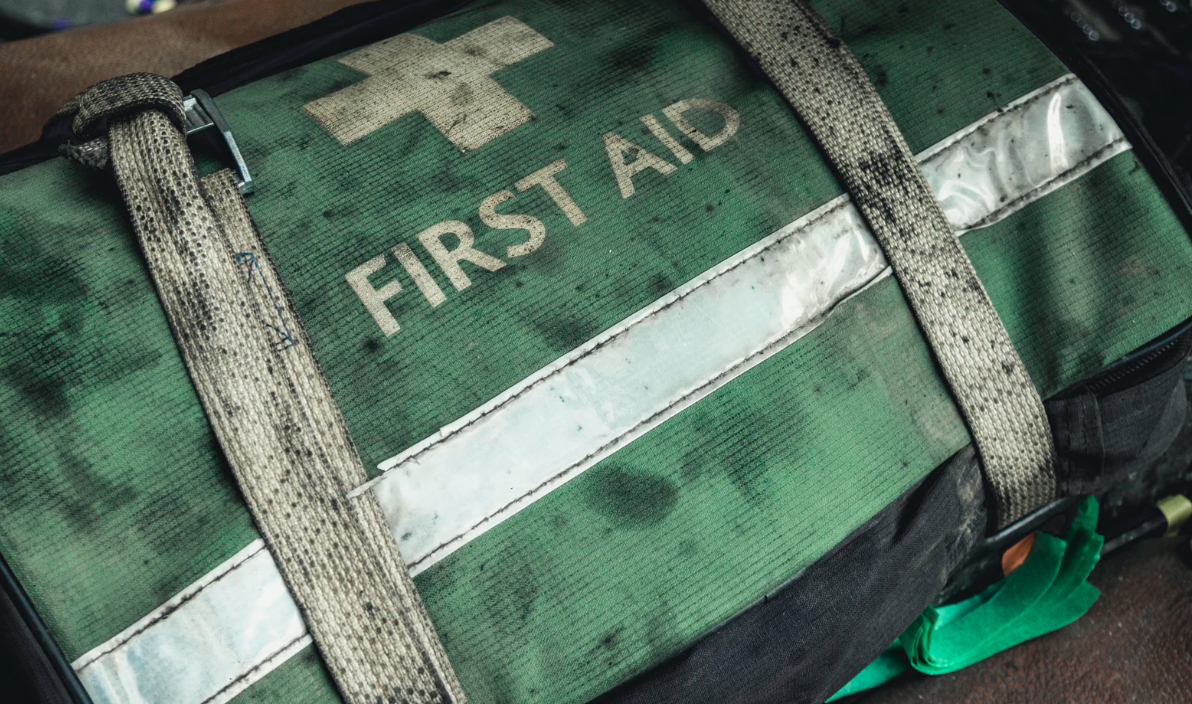Do you ever find yourself worrying about what the future holds? Hurricanes destroy millions of homes every year. Flooding causes power outages and isolates families for weeks at a time. There’s no doubt that the world is a dangerous place. Are you prepared for it?

One way to prepare is by creating an emergency kit. And today, that’s what we’re doing – we’re helping you build a mobile home emergency kit with 8 essential items. You can customize your kit, of course. But we encourage you to seriously consider adding all of these items to your kit. They could save your life.
#1 Water
Fresh water is a must-have. Experts suggest that you stock enough water in your emergency kit to last three days. Purchase gallon jugs or cases of bottled water. Replace your stash of water every two years, because bottled water doesn’t stay fresh forever. Store water in a dark area of your home, away from the sun, in a place that’s as cool as possible.
#2 Food
Canned or dried foods, granola bars, or military rations are another must. If you choose to stock canned food, be sure to add a can opener to your kit, too. You’ll be thankful for it! Military rations are dehydrated meals (also called MREs). Just add water and enjoy. MREs are good for up to five years and are designed to be carried in a backpack, which is handy.
Again, store enough emergency food to last three days. If you’re unwilling to restock your emergency kit every six months, then choose food options that last for longer periods of time. It’s up to you.
#3 First aid kit
A first aid kit should contain items such as:
- Band-Aids and butterfly closures
- Large bandages
- Gauze
- Tweezers and medical scissors
- Nonlatex gloves
- Antiseptic wipes
- Ibuprofen
- Asprin
- Antibiotic.
Go to the Red Cross website for a full list.
#4 Emergency blanket
If you or a family member is sick or hurt and begins to get hypothermia, you’ll be glad you packed an emergency blanket. They don’t take up much room, are very cheap, and are big enough to fit several individuals underneath. Often, emergency blankets come in bulk from 25 to 50. That may seem like a lot, but you’ll be surprised how many uses you’ll find for this versatile and essential addition to your kit.
#5 Flashlights and batteries
Don’t be caught in the middle of a natural disaster without a flashlight. A couple of heavy-duty flashlights and extra batteries are essential additions to your kit and may save lives. Replace the batteries in your emergency kit every five years or so. Also, consider adding a solar-powered flashlight to the kit as a backup option.
#6 Radio
Always have a battery-powered or hand-crank radio in your kit. More specifically, experts suggest investing in an NOAA weather radio. And don’t forget to pack additional batteries for your radio too.
#7 Cell phone charging cords
Admittedly, cell phone charging cords are not the first thing on our minds when we’re rushing to the basement during a hurricane. However, nothing could be more valuable in the event of a dead phone. You can buy generic charging cords that fit your phone at Walmart or on Amazon.
#8 Backpack
Could you carry your emergency kit with you if you had to? It would be difficult to tote all those bulky supplies around by hand. That’s why you should keep a backpack ready at hand (or, better yet, one backpack for each family member).

Customizing your kit
Besides the essentials we just discussed, add supplies that fit your family. For instance, if you have a small baby, formula and diapers are a great addition. And don’t forget that humans aren’t the only ones who need to eat! Store pet food, as well.
If you wear glasses, consider adding extras to your kit. If you take prescription medicine, you won’t want to be without that, either. Matches or flint and steel, a fire extinguisher, and duct tape might come in handy too.
And, of course, keep a mini addition of your mobile home emergency kit in your vehicle at all times.
Your mobile home emergency kit
Lastly, store your mobile home emergency supplies in an accessible place. This may mean dedicating a metal shelf to supplies in your basement. Or stocking a cupboard upstairs with necessities.
Having a mobile home emergency kit can save lives and make things easier for you and your family in case a disaster does strike. Even after all the work you’ve put into your kit, we still hope you never have to use it.
It’s good to prepare for a possible disaster, but it’s also good to plan and prepare for everyday life. Looking for ways to improve your mobile home for day-to-day living? Check out these 6 Ways to Make Your Mobile Home More Sports-Friendly.



